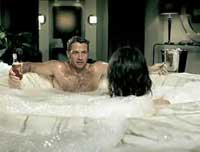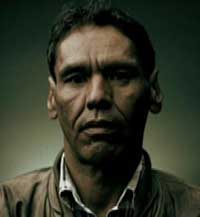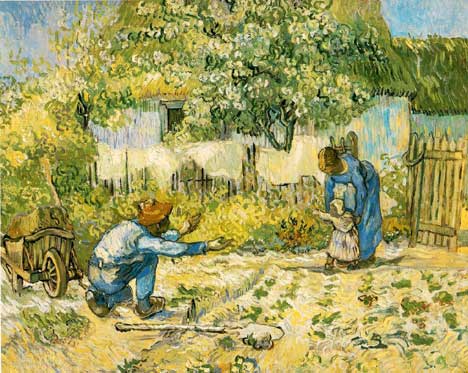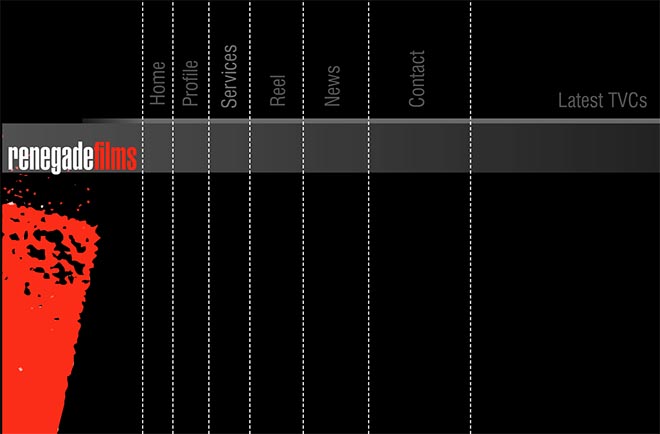I worked with a group of denominational leaders from the Methodist Pacific Council earlier this week. Our brief was to look at cultural icons for clues to the ways we might engage with popular culture. These people were from networks in Fiji, Tonga, Samoa, Papua New Guinea, Solomon Islands, New Zealand and Australia.
Australian Identity
We began with a Qantas three minute television commercial based on Peter Allen’s song, I still call Australia home. This was the first in a series, filmed in 1997, featuring spots around the world alongside Australian scenery. Our reflection was on the sense of Australian identity developed only as people leave their home and come back again. The video was directed by Geoff Dixon for Mojo Sydney and is available to see online at Duncans TV
Australian Humour
 The next advertisements came from the Bundaberg Polar Bear campaign. There are four of these available online at bundabergrum.com.au The first we looked at was the Refreshing Lime ad featuring a polar bear in a helicopter dropping cold water on two parched mates. The second featured a polar bear in a tree dropping down on cue as the boys chatted up the female tourists in the camping ground.
The next advertisements came from the Bundaberg Polar Bear campaign. There are four of these available online at bundabergrum.com.au The first we looked at was the Refreshing Lime ad featuring a polar bear in a helicopter dropping cold water on two parched mates. The second featured a polar bear in a tree dropping down on cue as the boys chatted up the female tourists in the camping ground.
We talked about the perceived preoccupations in popular culture with staying cool, mateship and of course sexuality. We considered the sense of humour that used a polar bear as the mascot of a drink made in sub tropical region. This was the same sense of humour that led to tall men being called Shorty, bald men being called Curly and redheads being called Bluey.
Australian Larrikins
The third section introduced the larrikin concept.
 The Hahn Premium Light advertisement, Sex Bomb was considered the funniest advertisement of 2004 in Australia. It begins with a sensuous ambience, with a woman walking to her spa and slipping into the bubbles. Out of nowhere drops the guy with his Hahn Premium Light beer. What?, he says in response to her shocked face. The ad, directed by Paul Middleditch and available to view at Duncans TV, encouraged men to drink responsibly without losing their sense of humour.
The Hahn Premium Light advertisement, Sex Bomb was considered the funniest advertisement of 2004 in Australia. It begins with a sensuous ambience, with a woman walking to her spa and slipping into the bubbles. Out of nowhere drops the guy with his Hahn Premium Light beer. What?, he says in response to her shocked face. The ad, directed by Paul Middleditch and available to view at Duncans TV, encouraged men to drink responsibly without losing their sense of humour.
We reflected on the challenge of connecting with people who at present have no interest in the church as it is. Major points of tension included the wowser/larrikin contrast. Since the temperance movement of the nineteenth century, many of the Christian churches in Australia have had a tacit agreement that alcohol will not be consumed in connection with their gatherings. Another point of tension was varying attitudes toward sexuality and humour. The Christian church is not seen as a friendly environment for Australian blokes.
We looked at TV advertisement for Lipton Ice Tea, based on a beach. A surfer walks up to two sunbathing babes and frankly tells them he’s come to have a close up look to see if they’re good looking or not. They tell him honestly that they’ve already checked him out and decided they’re not interested, though they will play along just in case he’s rich. They tell him he’d look better if he sucked his stomach in more. He tells them he’s off to see two topless girls further up the beach. The ad finishes with the line, Be Yourself Naturally. We discussed the Australian admiration for frankness. The ad is online at Duncans TV.
We considered the fact that the ad was introducing an overseas product into Australia, appealing to the Australian psyche. This has a parallel with the attempts of the Christian church to contextualize the Christian gospel.
Australian Prejudice
 Our last TV ad was Saatchi & Saatchi United Nations ad, Bad Mouth. An Aboriginal man, a Muslim man, an Asian woman, a Lebanese man, a Jewish man, and an effeminate man each vilify people of their own sort. The finishing text: It doesn’t make sense coming out of their mouths. Does it make sense coming out of yours? We talked about multicultural identity in Australia, recognizing that Australian popular culture is only now coming to terms with the changes in immigration implemented in the 1960s through to 1980s. Until the middle of the twentieth century the federal government pursued a White Australia policy, which in effect excluded people who could not easily blend into a culture dominated by white British values and appearance. The ad is online at Duncans TV.
Our last TV ad was Saatchi & Saatchi United Nations ad, Bad Mouth. An Aboriginal man, a Muslim man, an Asian woman, a Lebanese man, a Jewish man, and an effeminate man each vilify people of their own sort. The finishing text: It doesn’t make sense coming out of their mouths. Does it make sense coming out of yours? We talked about multicultural identity in Australia, recognizing that Australian popular culture is only now coming to terms with the changes in immigration implemented in the 1960s through to 1980s. Until the middle of the twentieth century the federal government pursued a White Australia policy, which in effect excluded people who could not easily blend into a culture dominated by white British values and appearance. The ad is online at Duncans TV.
The Uniting Church in Australia included people who had fought to have the White Australia policy lifted. Multicultural diversity was named as a key part of the values being developed at national, regional and local levels. At the same time it was proving to be difficult to move beyond a multi-ethnic approach in which the English speaking part of the Church continued to operate without much impact from other cultures. Representatives at the Monday gathering wondered why there were not Aborigine or Pacific Island representatives at the gathering. It was acknowledged that structural participation took the Church so far but that friendships needed to be built up at every level. It was difficult to develop a consistent partnership with the Aborigine people when there was no single language or political entity shared by all Aborigine and Islander people. Australia has a reputation for being a place in which different ethnic groups can live in peace, particularly in the major cities. However there is a long way to go in the development of a truly multicultural identity in which white Australians learn to engage with the cultures of their fellow Australians.
We talked about the reality that there are many Australian identities being developed. Traditionally even urban Australians have looked to the bush and the digger for their sense of national pride. Now Australia is developing a wide range of media in which women are valued, different ethnic groups are highlighted, and people of various generations are acknowledged. The Uniting Church in Australia faces the challenge of relating to the ever changing mix of contexts in each region.
It was asked if the Uniting Church had engaged with television advertising. Pentecostal groups had engaged with television programming that was aimed at people engaging with product – be that healing or prosperity. Christian Television Association had taken a documentary approach in which people could engage with faith through education. Engaging with a television culture would lead people to consider carefully the aspects of the gospel that could be highlighted, but also the aspects that could be left behind. For example, radical counter-cultural discipleship that did not promise benefits would not do down easily in a consumerist environment.
Continuing Conversion of the Church
We finished with a look at Darrell Guder’s book, The Continuing Conversion of the Church, Eerdmans, 2000. Guder reminds us that failing to take the risk of translation amounts to sin. We should follow God’s lead in inculturating the gospel.
Mission is to be a continuing process of translation and witness, whereby the evangelist and the mission community will discover again and again that they will be confronted by the gospel as it is translated, heard and responded to, and will thus experience ongoing conversion while serving as witness.





 The next advertisements came from the Bundaberg Polar Bear campaign. There are four of these available online at
The next advertisements came from the Bundaberg Polar Bear campaign. There are four of these available online at  The Hahn Premium Light advertisement, Sex Bomb was considered the funniest advertisement of 2004 in Australia. It begins with a sensuous ambience, with a woman walking to her spa and slipping into the bubbles. Out of nowhere drops the guy with his Hahn Premium Light beer. What?, he says in response to her shocked face. The ad, directed by Paul Middleditch and available to view at
The Hahn Premium Light advertisement, Sex Bomb was considered the funniest advertisement of 2004 in Australia. It begins with a sensuous ambience, with a woman walking to her spa and slipping into the bubbles. Out of nowhere drops the guy with his Hahn Premium Light beer. What?, he says in response to her shocked face. The ad, directed by Paul Middleditch and available to view at  Our last TV ad was Saatchi & Saatchi United Nations ad, Bad Mouth. An Aboriginal man, a Muslim man, an Asian woman, a Lebanese man, a Jewish man, and an effeminate man each vilify people of their own sort. The finishing text: It doesn’t make sense coming out of their mouths. Does it make sense coming out of yours? We talked about multicultural identity in Australia, recognizing that Australian popular culture is only now coming to terms with the changes in immigration implemented in the 1960s through to 1980s. Until the middle of the twentieth century the federal government pursued a White Australia policy, which in effect excluded people who could not easily blend into a culture dominated by white British values and appearance. The ad is online at
Our last TV ad was Saatchi & Saatchi United Nations ad, Bad Mouth. An Aboriginal man, a Muslim man, an Asian woman, a Lebanese man, a Jewish man, and an effeminate man each vilify people of their own sort. The finishing text: It doesn’t make sense coming out of their mouths. Does it make sense coming out of yours? We talked about multicultural identity in Australia, recognizing that Australian popular culture is only now coming to terms with the changes in immigration implemented in the 1960s through to 1980s. Until the middle of the twentieth century the federal government pursued a White Australia policy, which in effect excluded people who could not easily blend into a culture dominated by white British values and appearance. The ad is online at